Hakka Earth Buildings
The next day we left early for another excursion, to the famous ‘Tulou’ or Hakka earth buildings of the Yong Ding district. With the help of Sucy I had booked a cheap two-days all-in trip.
Our bus was full and during the whole route a guide in front spoke into a microphone which amplified his voice to a loud distorted noise, probably more bearable if you could understand what he says. The views from the windows were interesting and it was nice to leave the city.
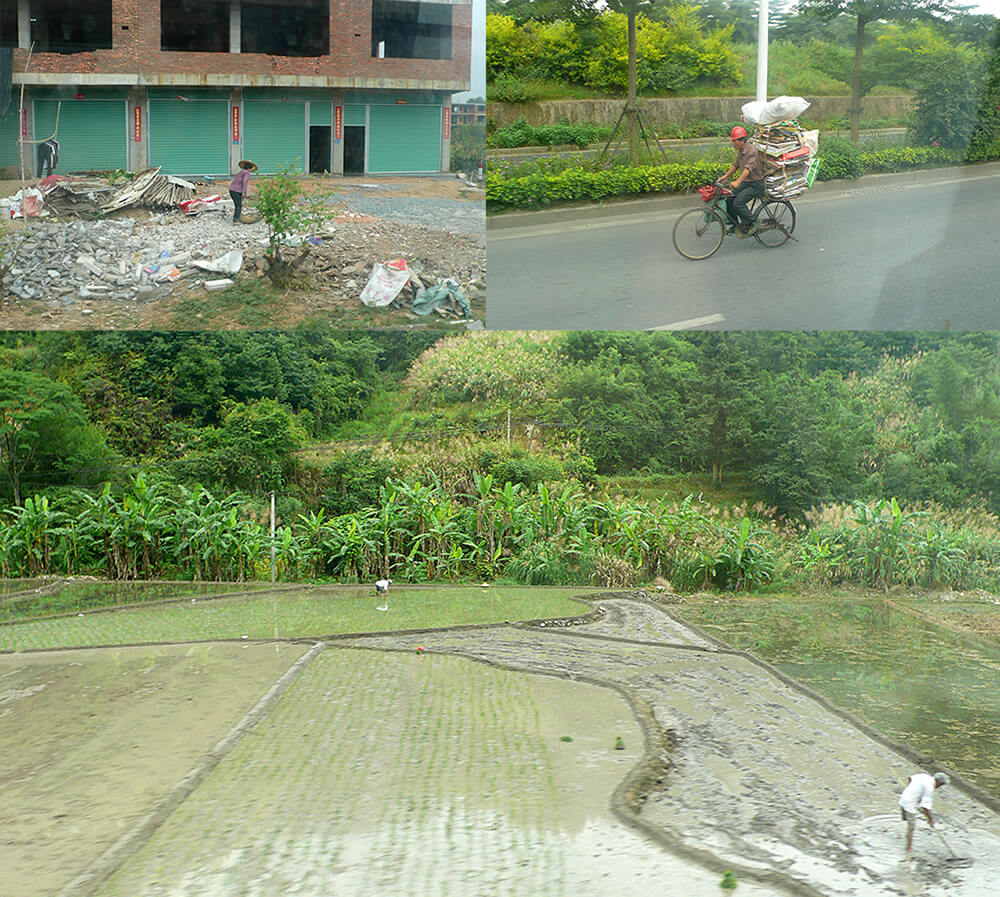
After about two hours we stopped in what appeared to be a huge shop with all kinds of food stuff, mostly dried fruits and meats, and long tables with benches on which we were invited to sit down. Each table was hosted by a young woman presiding a tea tasting session with tiny little cups and different flavours. Our whole party participated, and though the space was loud and full, the tea tasting was interesting, nice and relaxing, a rest from the noisy bus. Fujian grows many good teas. Actually tea is very expensive in China; or good tea is. Its social importance, regional differences, prices and rituals are comparable with those of wine in Europe.
There was a nice ambiance and some fellow travellers entered into fierce negotiations to purchase one or more of the teas, quite fun. Some of our companions seemed to have booked this trip primarily to buy specialties from the region. The shop- and tea ceremony would repeat itself three more times during the excursion on different locations.
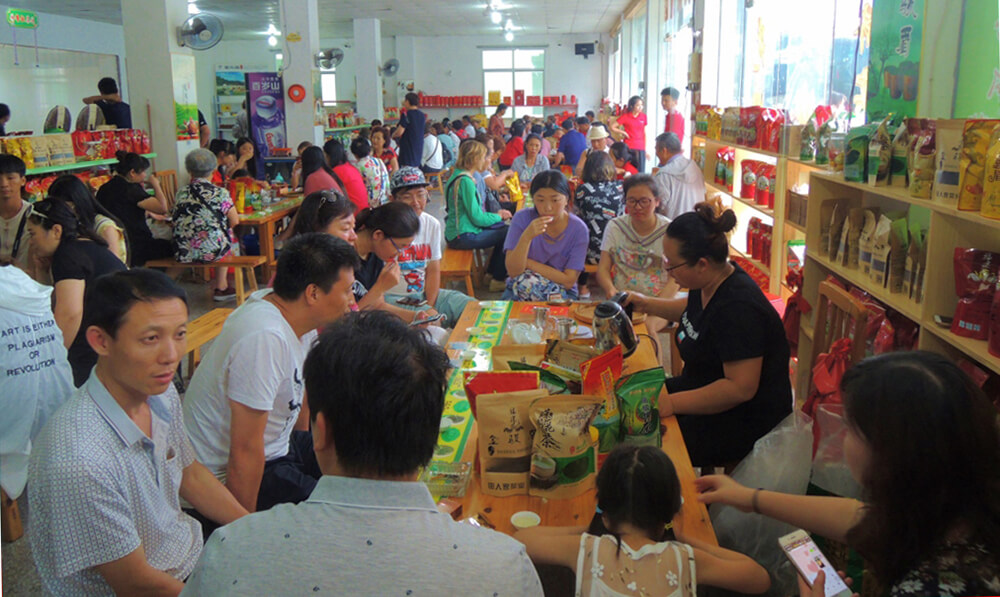
Back on the road the guide continued talking through the mike, and now also started moving through the bus, dripping something in peoples necks. Curious I also meekly bent my head to receive a blessing in disguise, immediately causing a strong burning: tiger balm! Our guide also appeared to be a salesman and these free samples were given in order to persuade us to buy. Half an hour later he started dripping stuff on peoples temples. This time I recognised the smell earlier, citronella. I had brought my own anti-mosquito liquid but he made quite some sales.
When we arrived in the village of Changjiao in Nanjing county, our destiny for today, we were handed over to a new guide, a girl with an even louder microphone. Soon we were in the midst of dozens of other groups with amplified guides, a true cacophony.
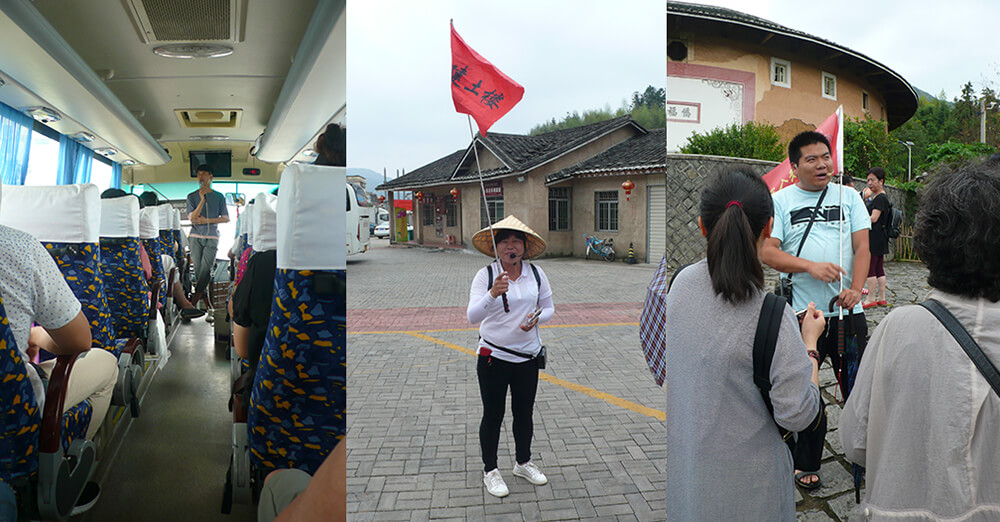
But we could see already from the road, and now behind the masses what we came for, the impressive Hakka earth buildings.
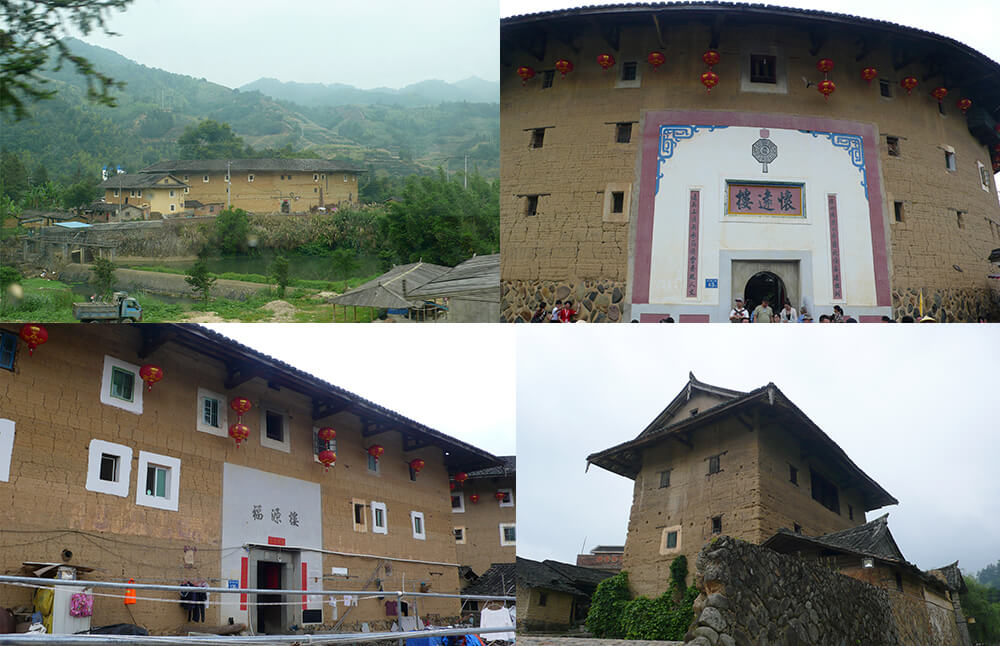
Slowly we were lead in between many others through the large entrance into the first round Hakka house, or Tulou, as they’re called here. Inside the noise was worse, but the interior impressive.

The first one was quite new, from 1906, but later we see older ones too and the styles vary little. This first day we were shown two earth buildings – or castles as they are also called here. The Hakka people came 800 years ago from the North of China to this part of Fujian. There were bandits in the area and to protect themselves they started building these large fortified earth houses, where many families could live together safely, and they kept on building them until recently. The biggest ones can host up to 800 people. The round buildings are the most famous, but we are shown also square and rectangular Hakka buildings. The earthen outside is mostly closed, with only one entrance. Inside there are various wooden floors with apartments, all facing the center where communal life takes place. In the middle of the bigger Tulou are also smaller stone buildings for communal purposes, often with elegant roofs.

The guides gave us little time inside. One organisation runs the tourism in all Tulou and I had a hunch the deal is that the organised visits only take place in a few Tulou and between approximately twelve and three pm. People still live in most, so it’s understandable, but the tourists are definitely rushed and squeezed. Tara and other people in Xiamen had told me they visited the Tulou with private cars and drivers; more expensive but now I guessed probably worth the difference. Still, this trip was loud but interesting too; especially anthropologically ;-). Leaving the building we were led to special platforms in order to take pictures. Later, near the busses, vibrating arm chairs were offered in which – for some money – tourists could recover from the stress.
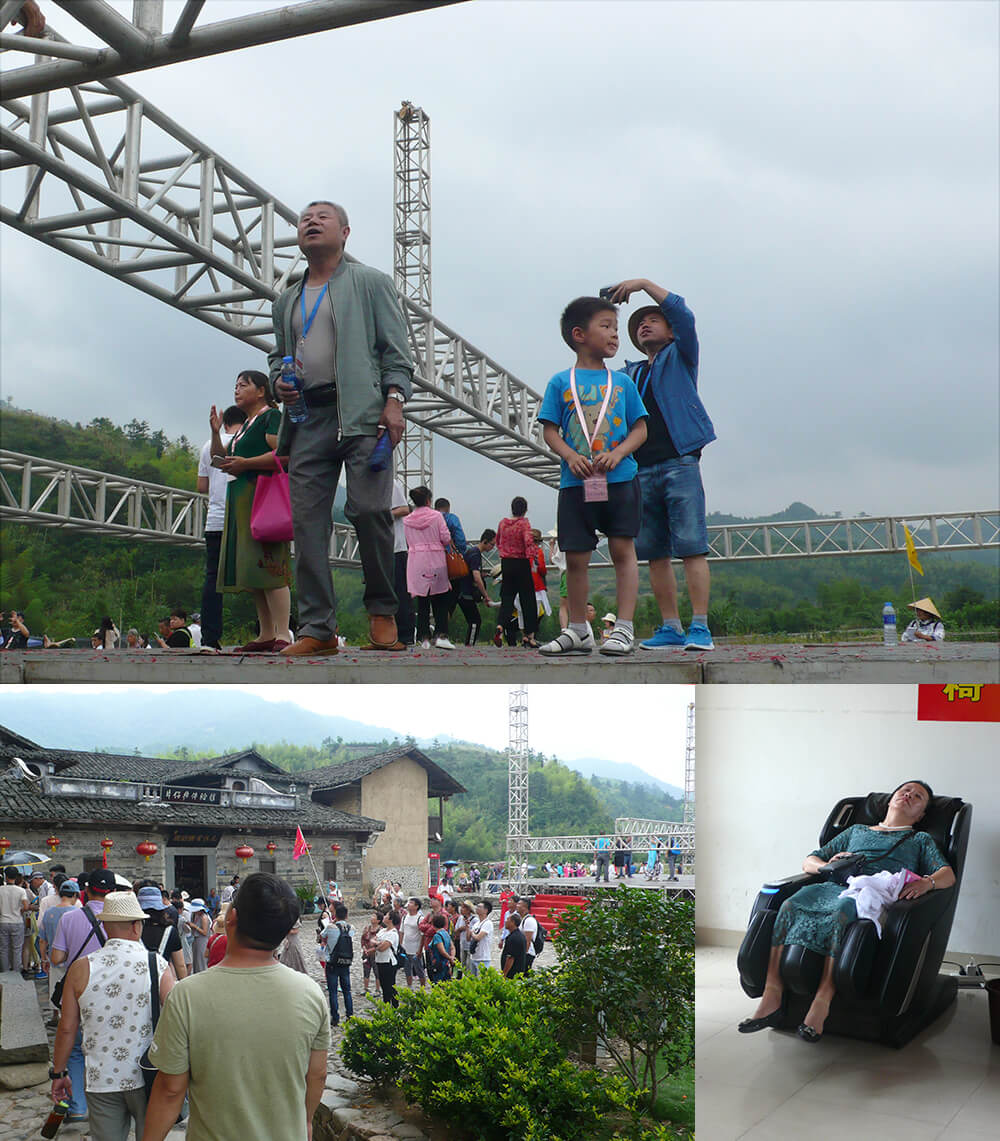
Then, with a slower paste, we were guided past many souvenir-, woodcarving and food shops. Most interesting were some small second hand graphic novels, of the same series I bought a few copies of back in Quanzhou; good source material for my work.
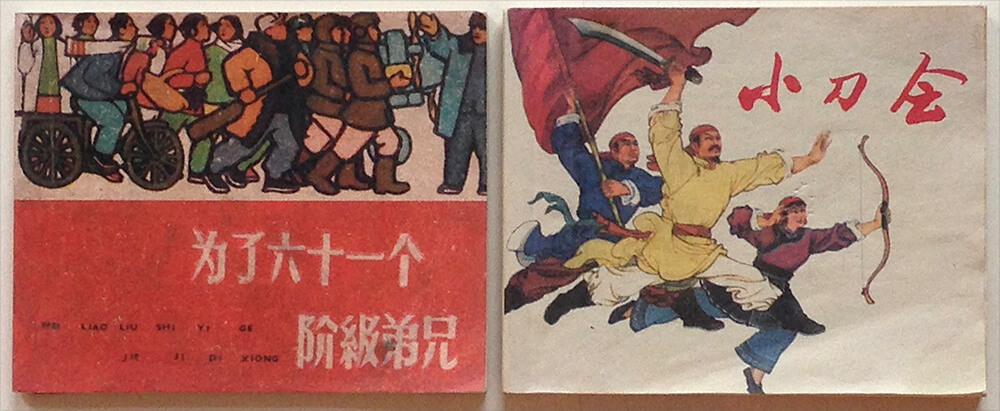
Around three the program for the day was finished, a bit of a relief. The rest of the group went back to Xiamen and it appeared that only we and two other people stayed in Changjiao. Good ;-).
The guide handed us over to a young man who brought us to a simple and spacious hotel. Meanwhile it had started to rain heavily, and didn’t stop until late, so further explorations of the village had to wait for the next day.
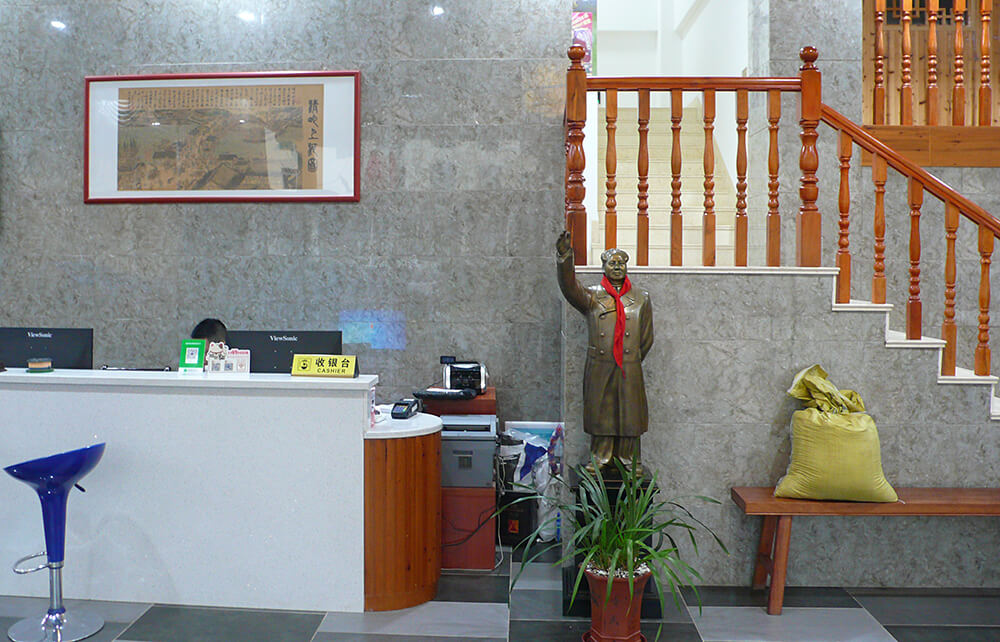
The next morning the village was indeed very quiet and beautiful. Part of it though was obviously recently built for the tourists and – I read later – for the shooting of the famous movie ‘Yun Shui Yao’ (The Knot). Hard to estimate what was really old and what was not. The river was.
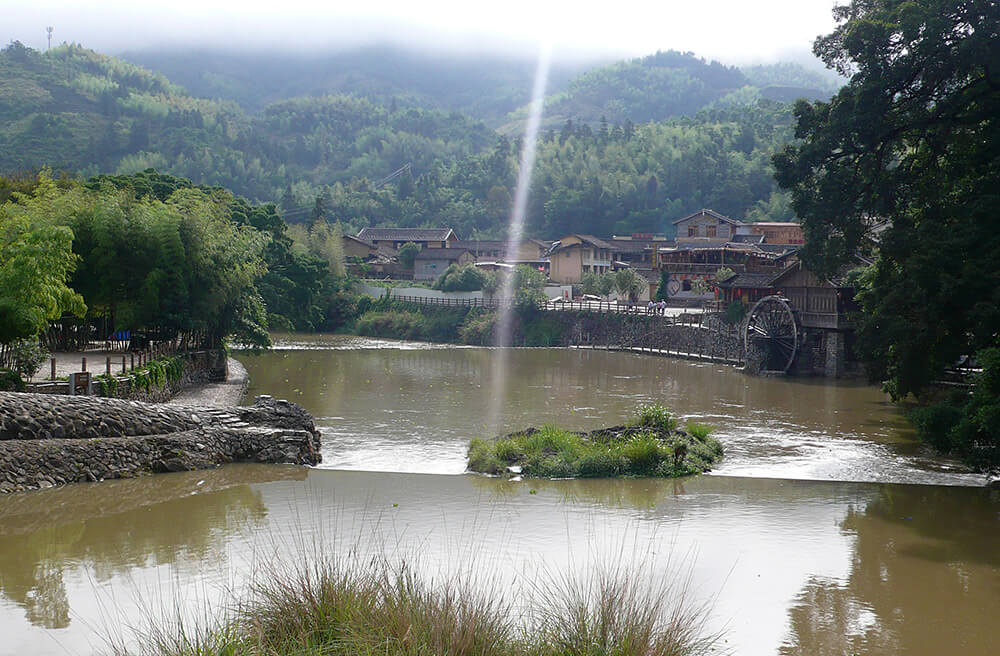
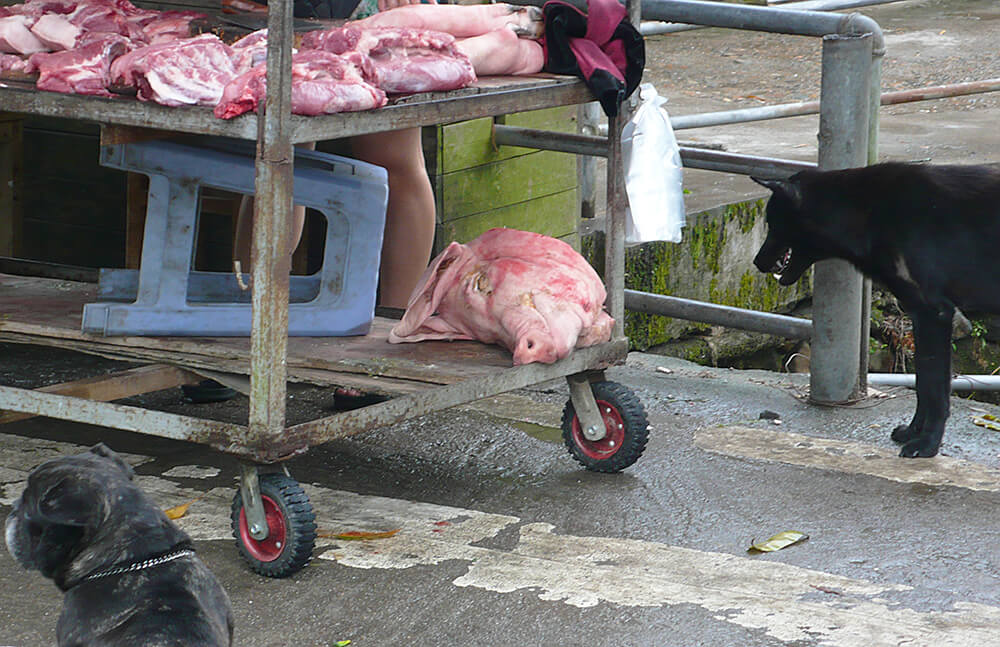



In the village are a few other Tulou, both square and round. The door of one was open and though the entrance is guarded by some villagers we were allowed to have a look. Inside, above the entrance of a hostel, two old Fujian fisherman’s costumes.
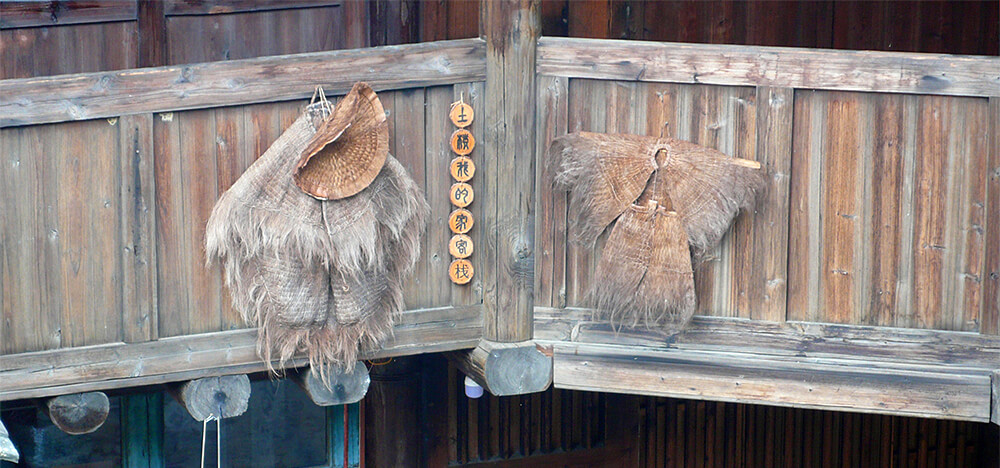
Then it was back to the hotel where the manager brought us to the huge shop- and restaurant complex besides the village where he had picked us up yesterday. After a long wait our new group and guide arrived, with whom we had lunch, and then left for another Tulou area: Yongding. Here, again on one spot, we visited more Tulou.
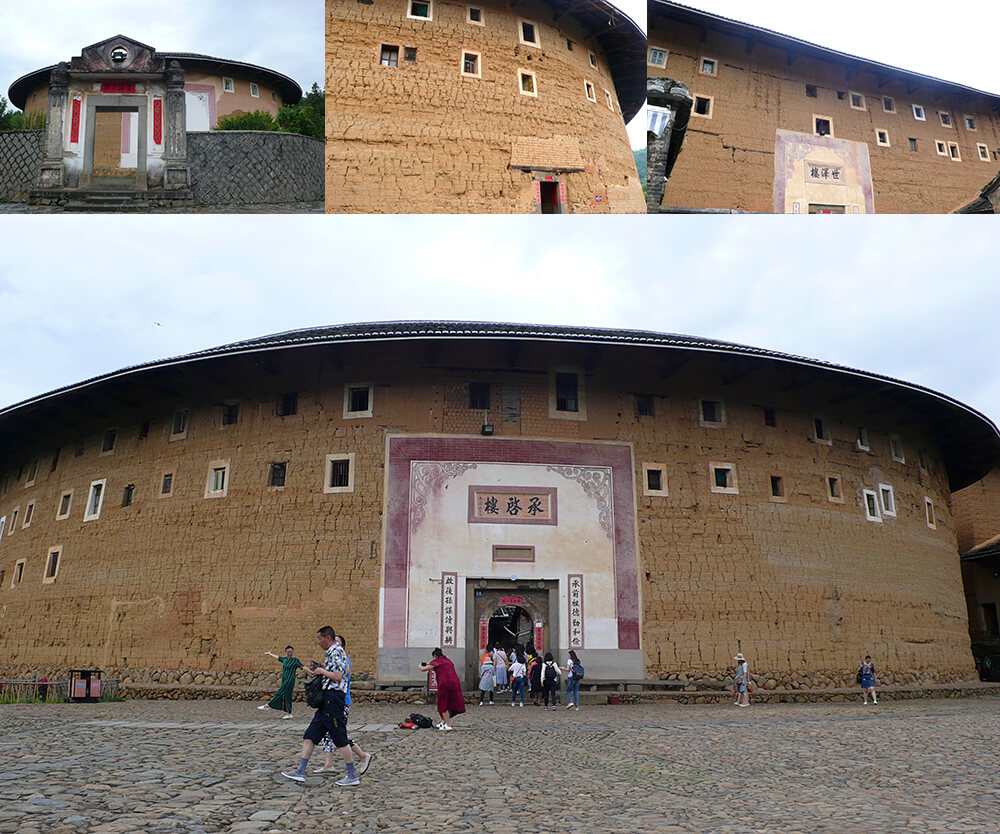
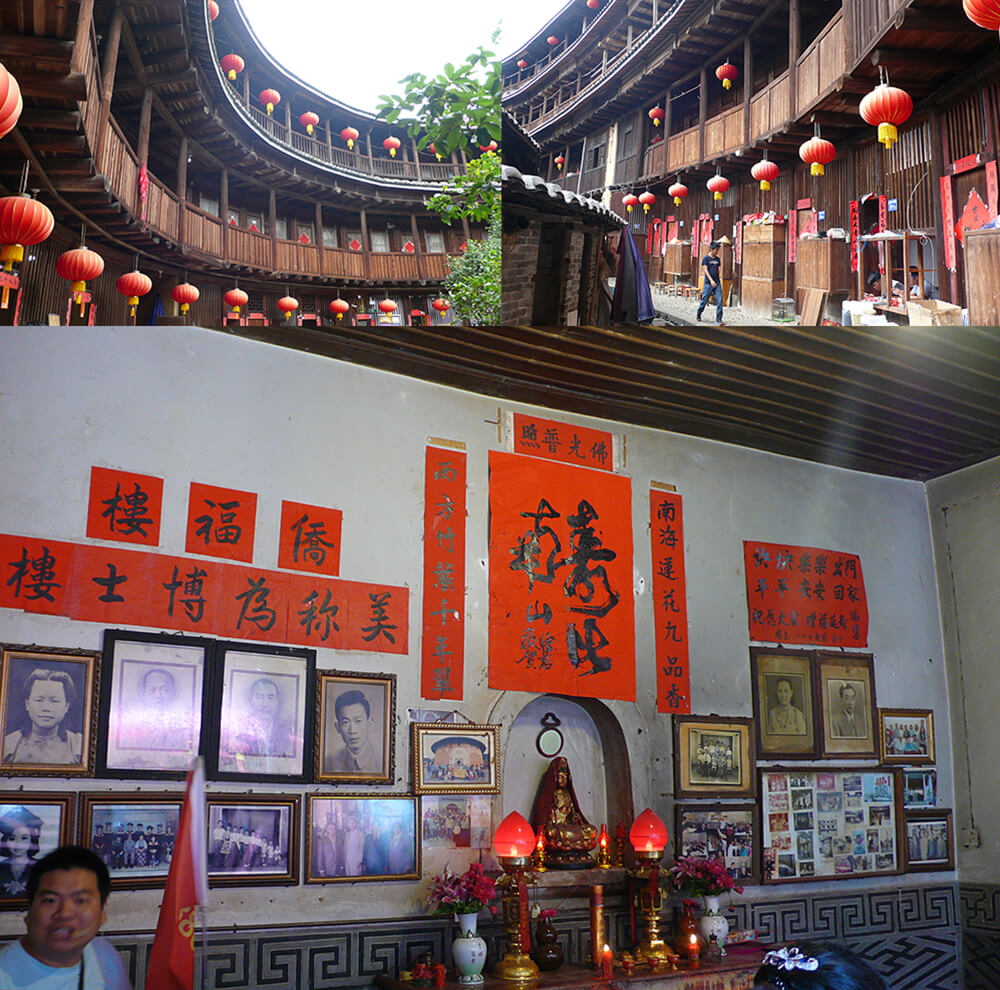
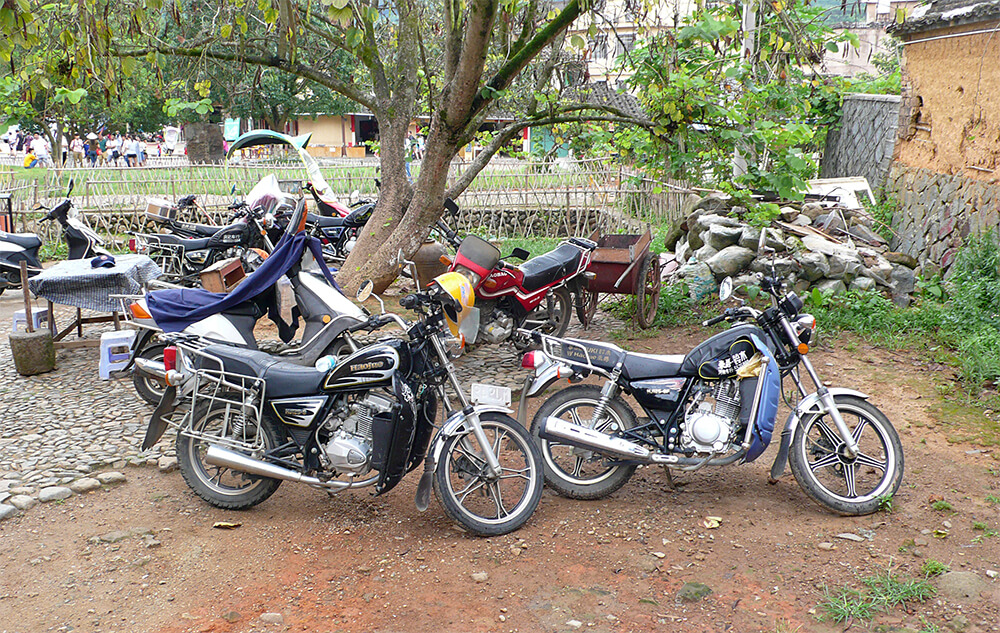
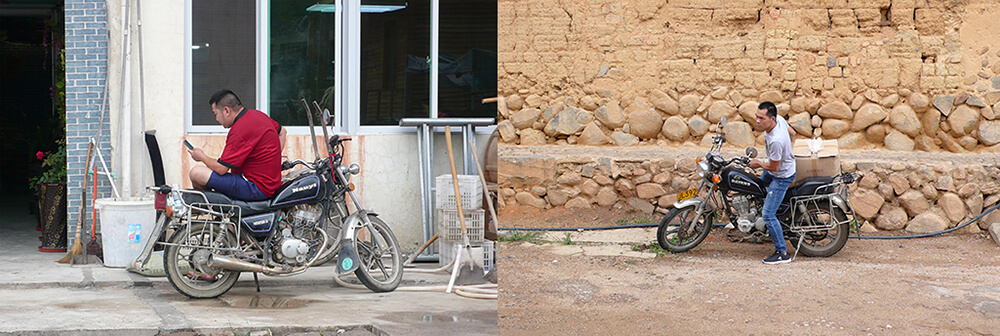
Afterwards another tea ceremony and again a long stroll past many stalls and shops, of which some had skilful wood carvings. Many again were of this curious mixture of kitch and process based inventions, especially when the natural shape of the wood or root was still visible and employed to co-shape the figures.
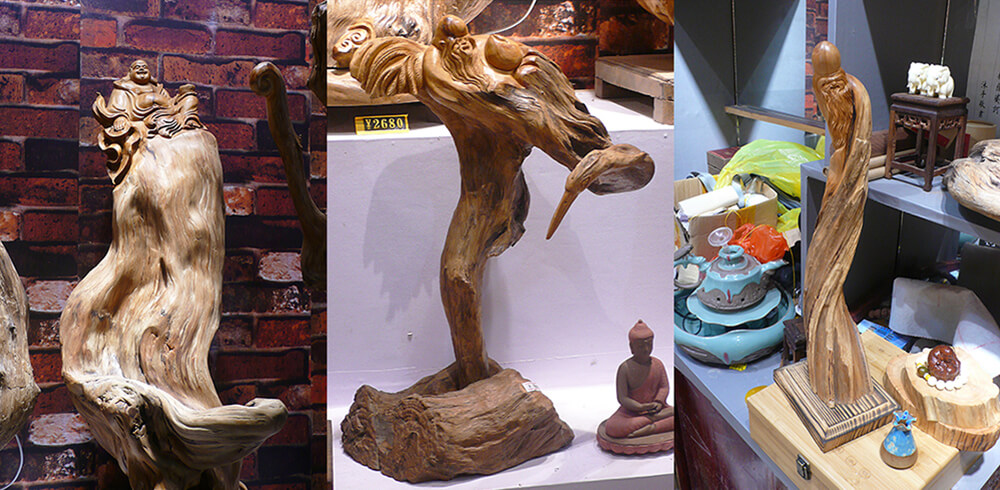
Then the bus took us back to Xiamen with a friendly, new, and again very amplified guide. All and all an interesting, sometimes stressful and often hilarious trip. I particularly liked the glimpses on the countryside, and the experience strengthened my wish to visit more of it in the future.
